Metabolic Raceway was an investigation into the history of the first patented bacteria Pseudomonas Putida NRRL-B5473.
This bacteria was engineered by scientist Ananda Chakrabarty at General Electric in the 1970’s to help clean up oil spills. He did this by inserting four plasmids from other oil degrading bacteria into one bacteria which was then able to metabolize a whole range of hydrocarbons. This one super bacteria he hoped would be able to do the work of remediating oil spills all on its own.
After having his patent initially rejected, do to its unprecedented liveliness. General Electric successfully appealed this decision before the Supreme Court. In a controversial five to four decision the supreme court approved Chakrabarty’s patent, setting a new precedent for the ownership and control of life.
Since then scientists working on bioremediation have discovered repeatedly that native communities of bacteria are most effective at degrading toxins in the environment. And that despite our best efforts genetically engineered bacteria are always out-competed by these native communities.
Read more about the story of Diamond vs. Chakrabarty at https://medium.com/lsf-magazine/mr-pseudomonas-198a5eddc47
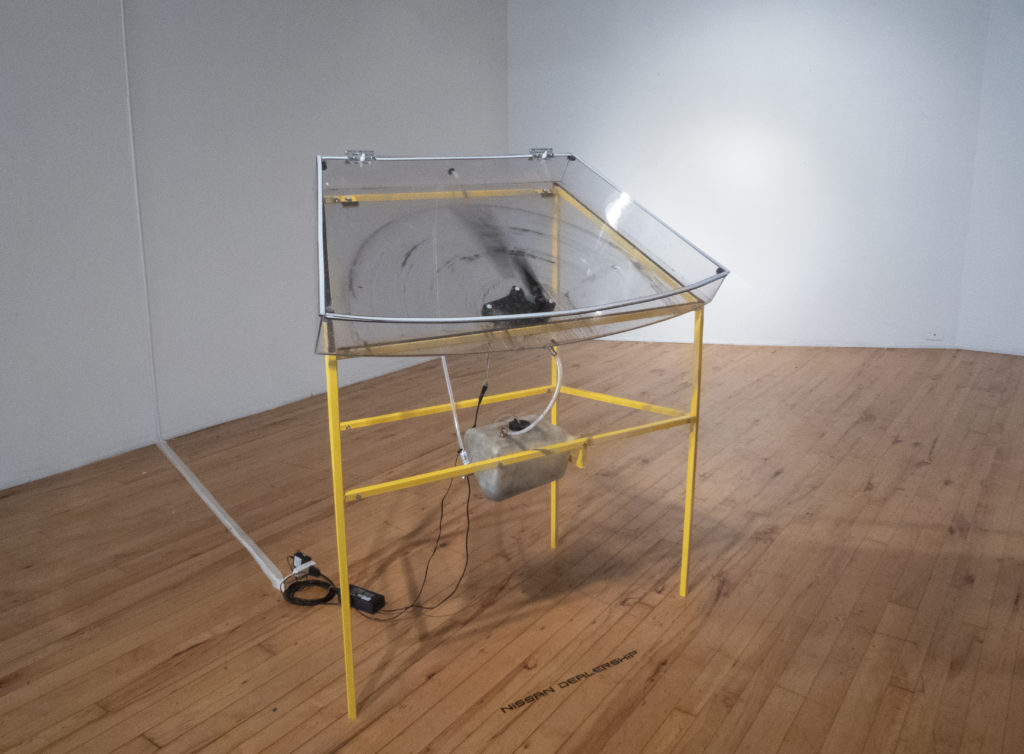
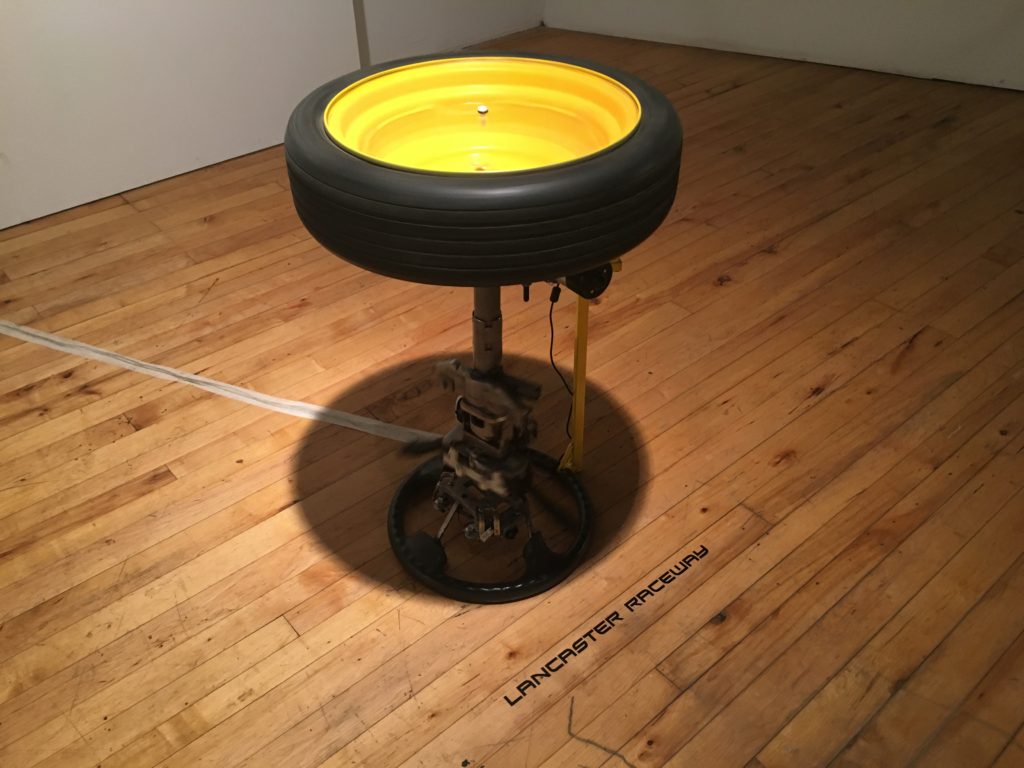

The exhibition of Metabolic Raceway included three DIY sculptural bioreactors, each made of car parts, that broke down motor oil over the course of several weeks. Kinetic elements of these bioreactors included, windshield wipers, crankshafts and steering wheels which performed the function of sustaining the bacterial metabolic activity. Each bioreactor contained a different polyculture of bacteria. These living cultures were sourced from post industrial soil samples around the Buffalo NY metropolitan area. The combined experience of these sculptural bioreactors was a melodramatic microscopic race not between cars, but between bacteria.
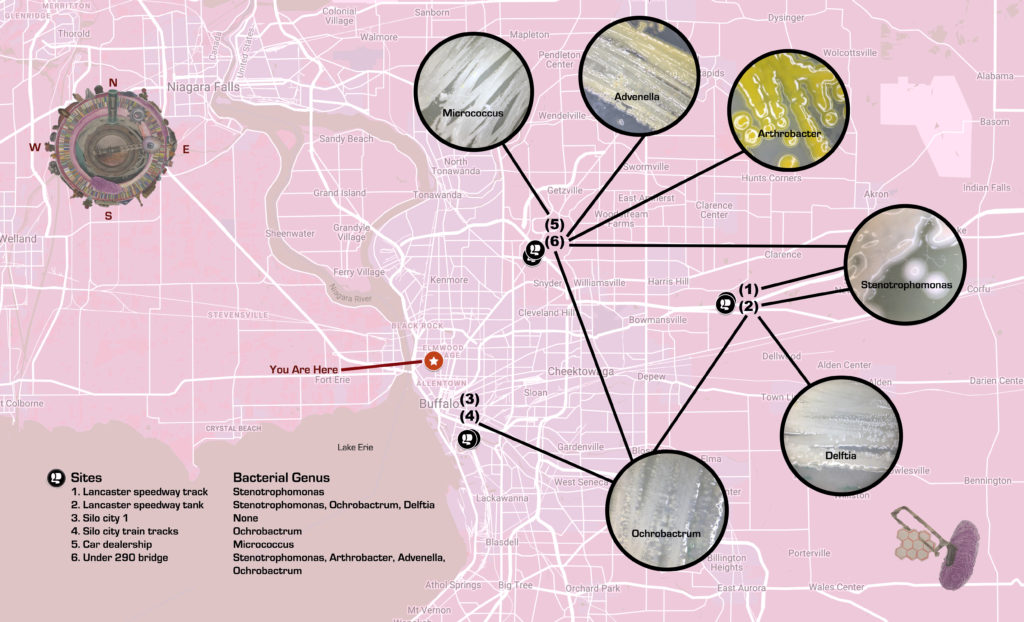
The polycultures collected for the race had to be verified in the lab as “containing living oil eating bacteria”. This was done by growing bacterial colonies on special nutrient deficient agar petri dishes, wherein a drop of motor oil was the only food source.
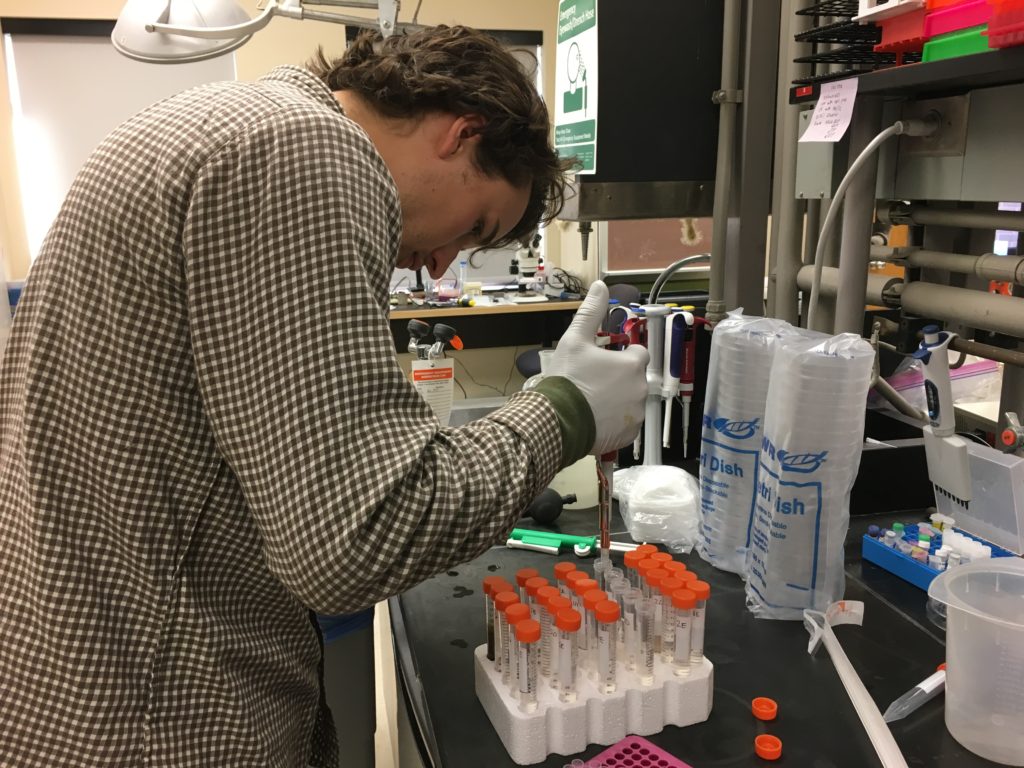
After months in incubation, resilient colonies of bacteria emerged on the petri dishes. Each colony was then prepared for DNA sequencing by amplifying the bacterial 16s rna strand in the thermocycler. Gel electrophorisis was used to separate out the amplified DNA. After which our samples were sequenced and cross referenced in a data base of known oil eating bacteria.
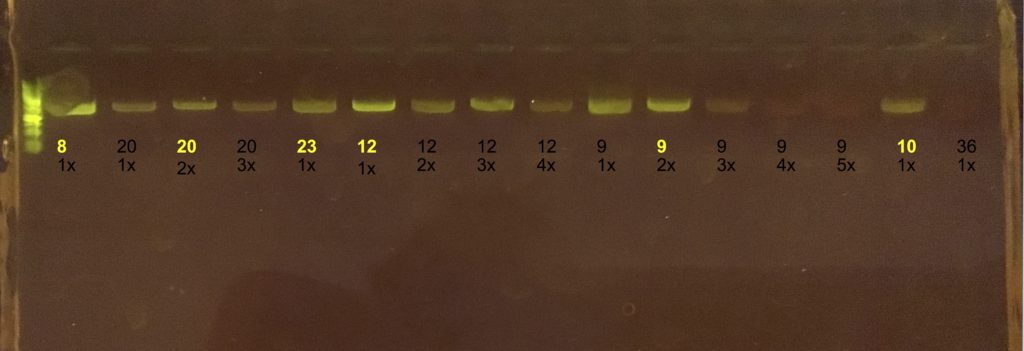

The race was monitored by periodically preforming cell counts of the polycultures living in the three bioreactors over the course of the exhibition. Using a microscope, and crystal violet dye used in gram staining, averages of the bacterial activity were gathered and served as the metric for the race.


The race concluded with one clear winner, the industrious bacteria from Lancaster Raceway winning with astonishing microbial vigor.
Over the course of this project we worked with scientists to create portraits of the communities we sampled and sequenced while in Buffalo New York. These histograms show the range of microbial diversity present in even the most polluted soils in Buffalo NY.
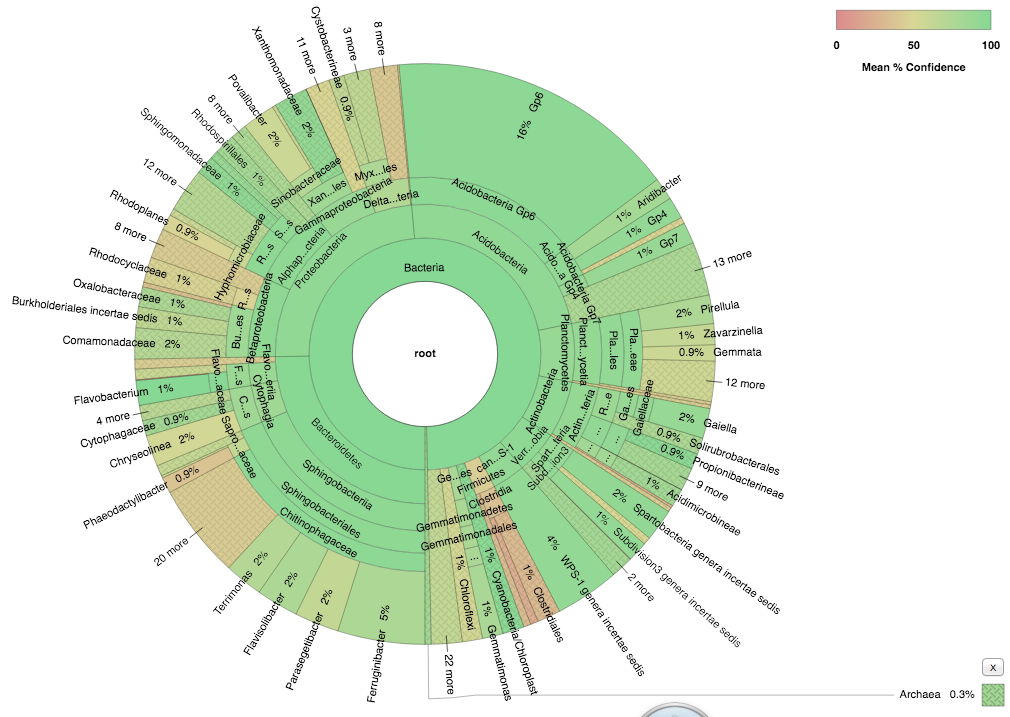
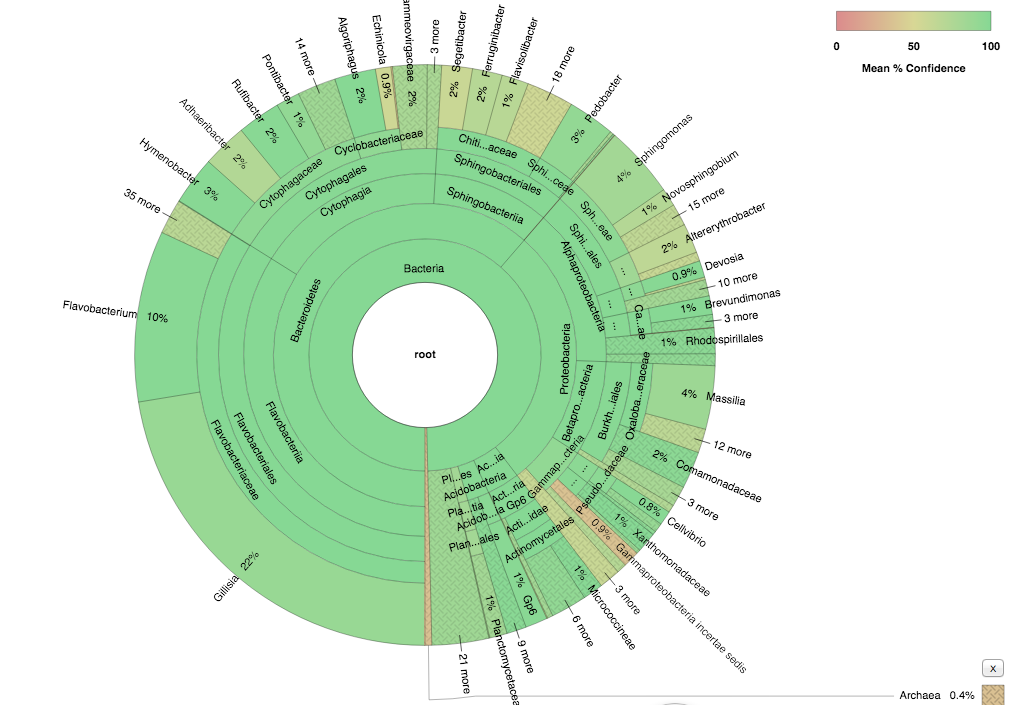

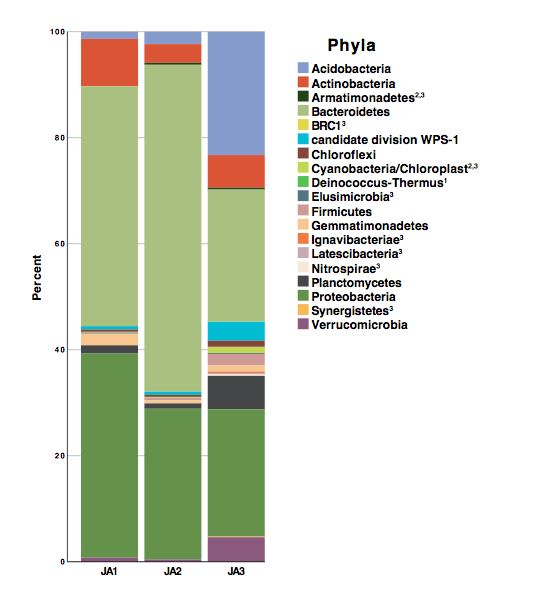
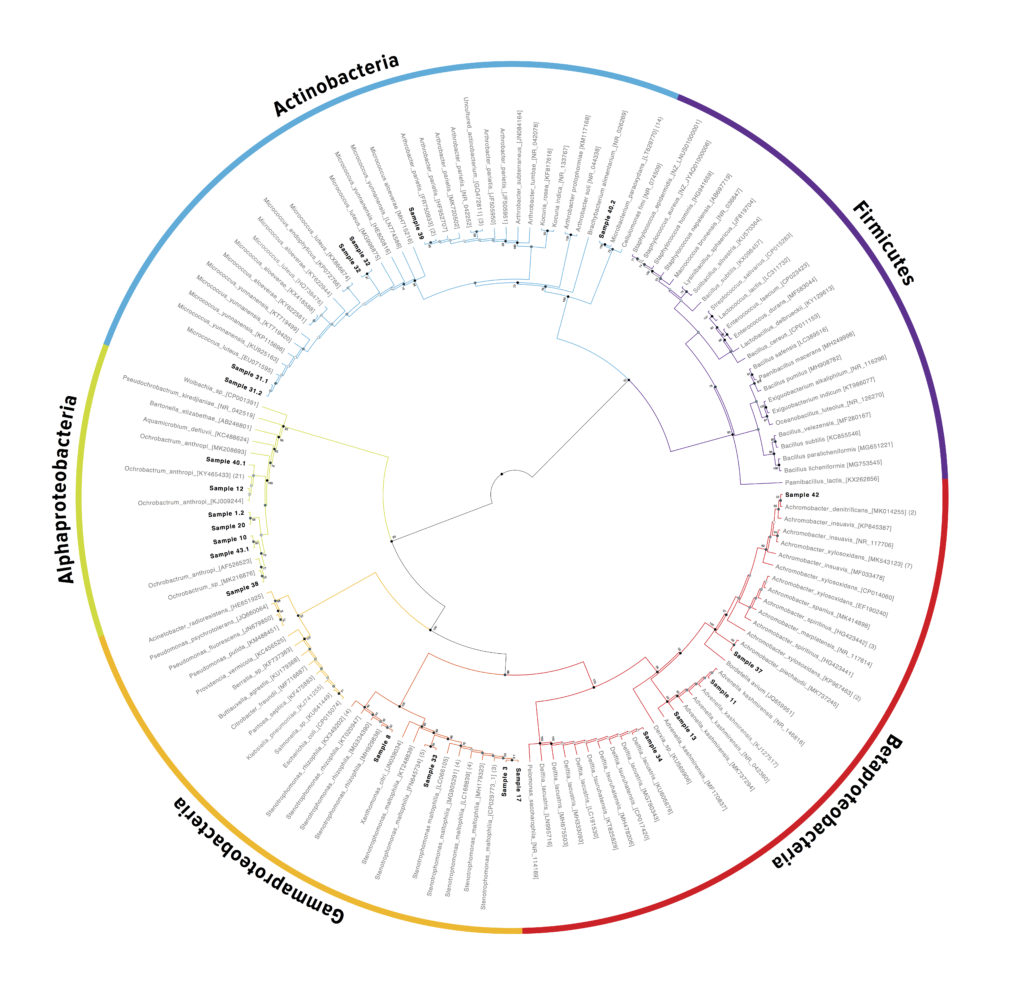


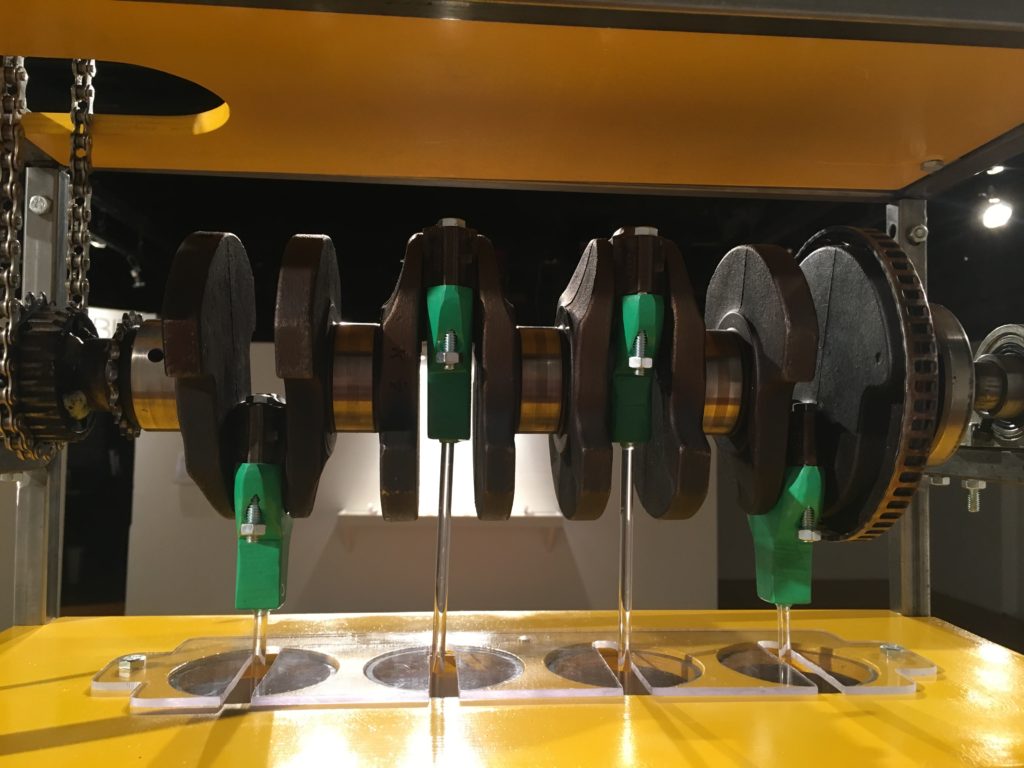

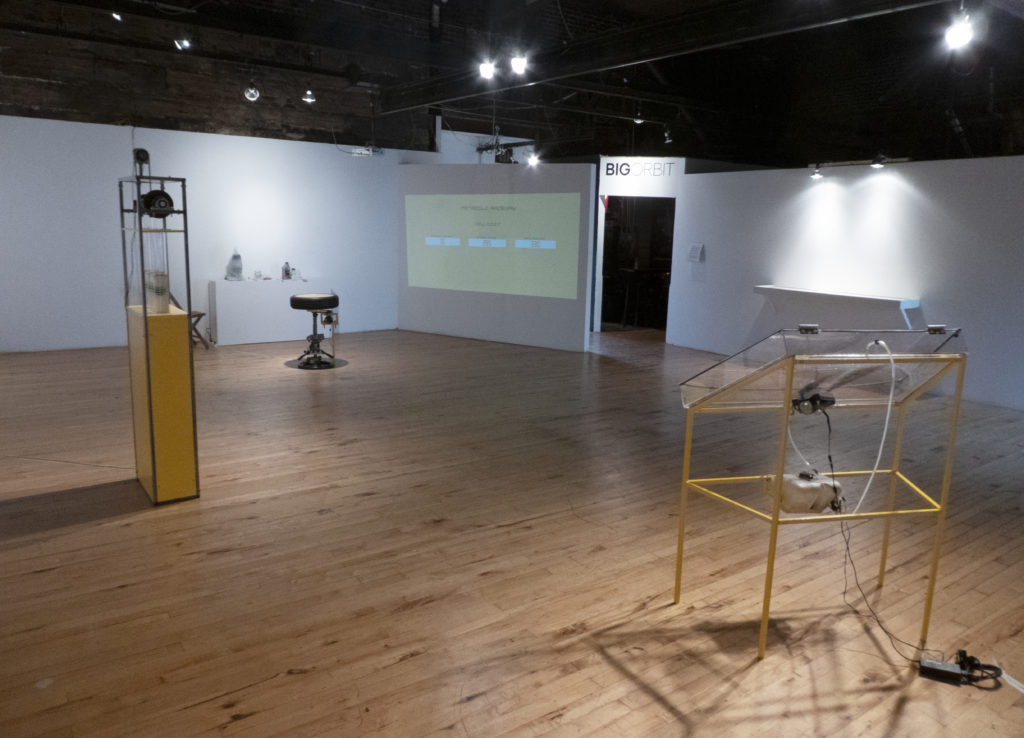
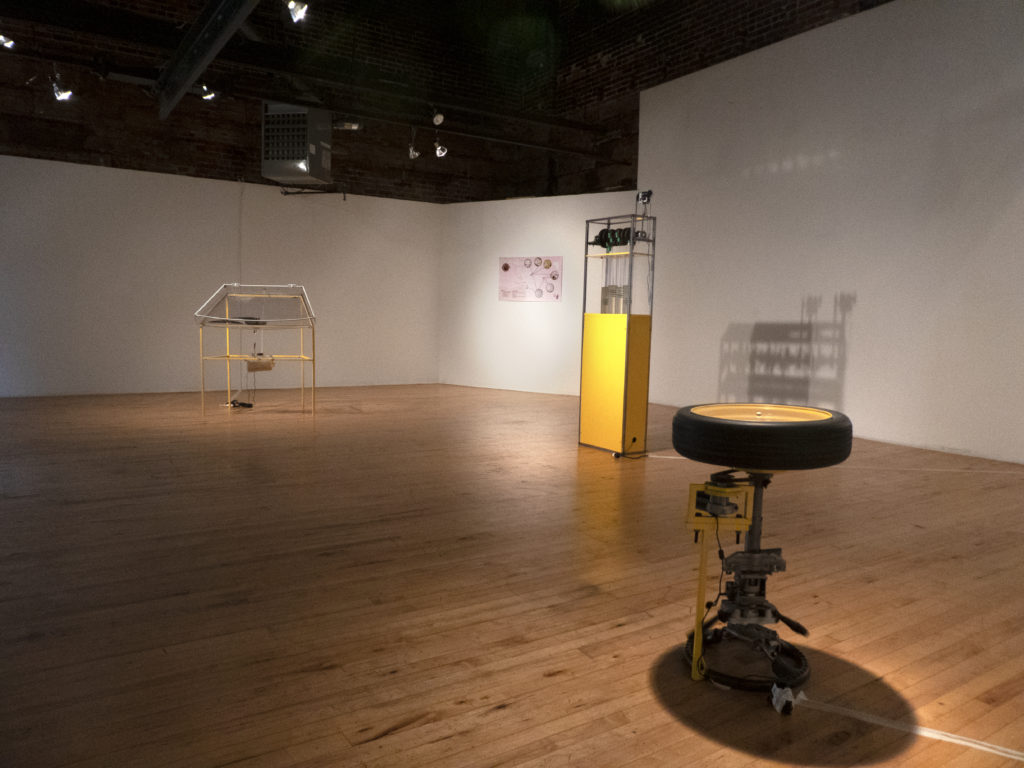


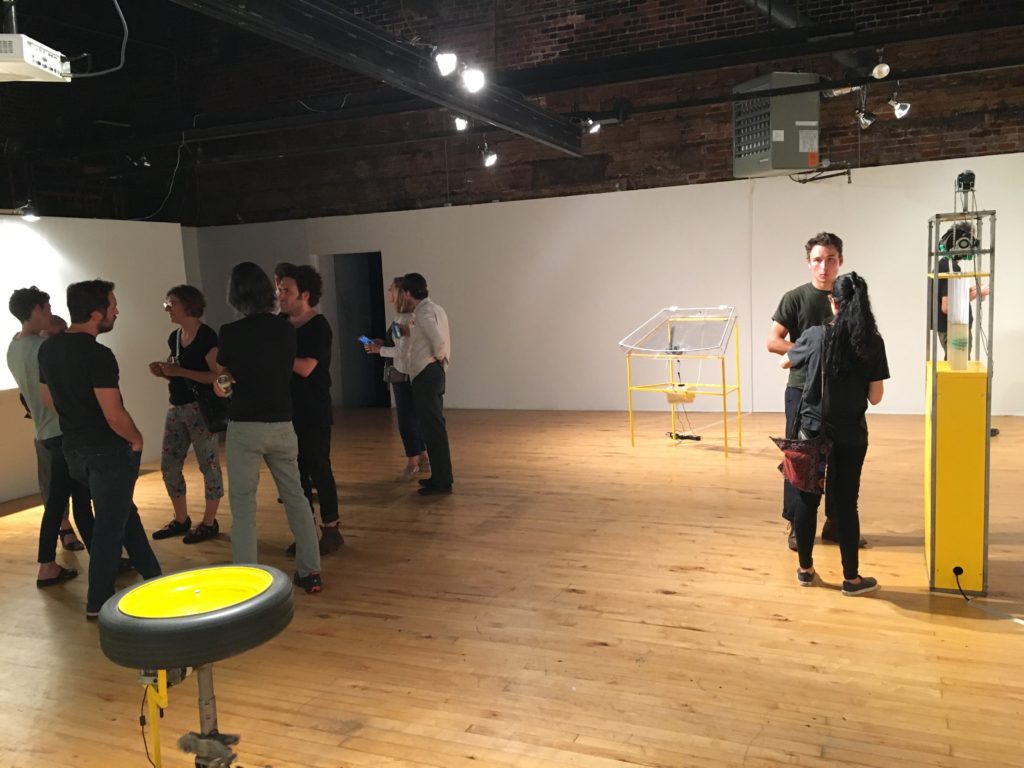

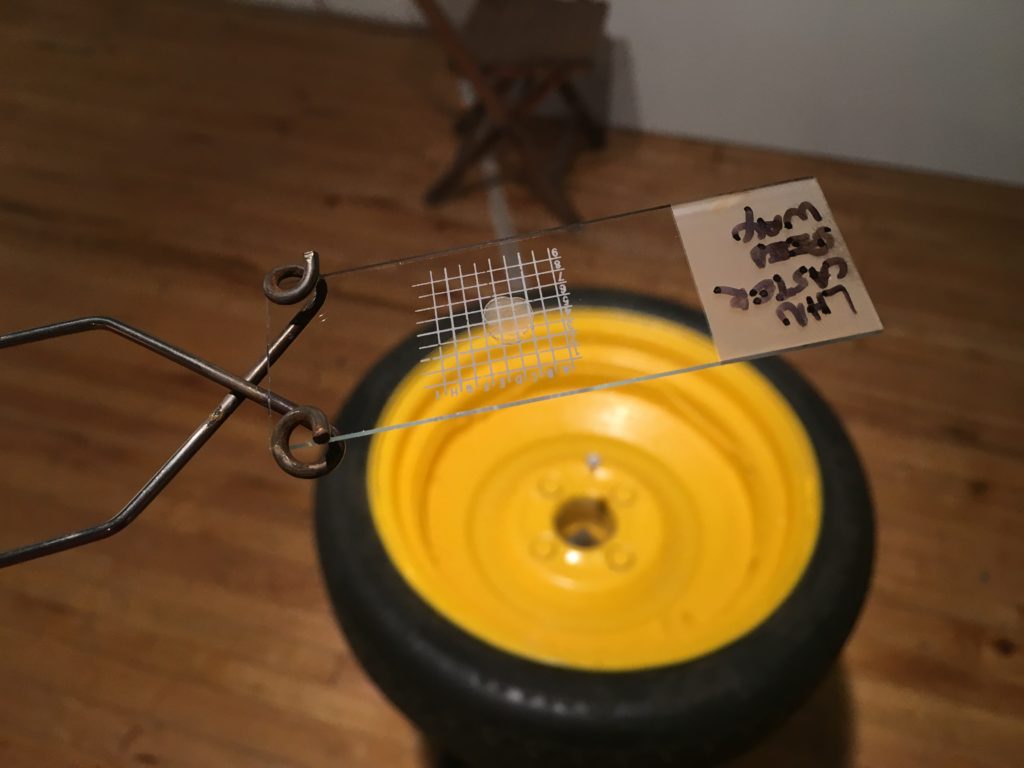
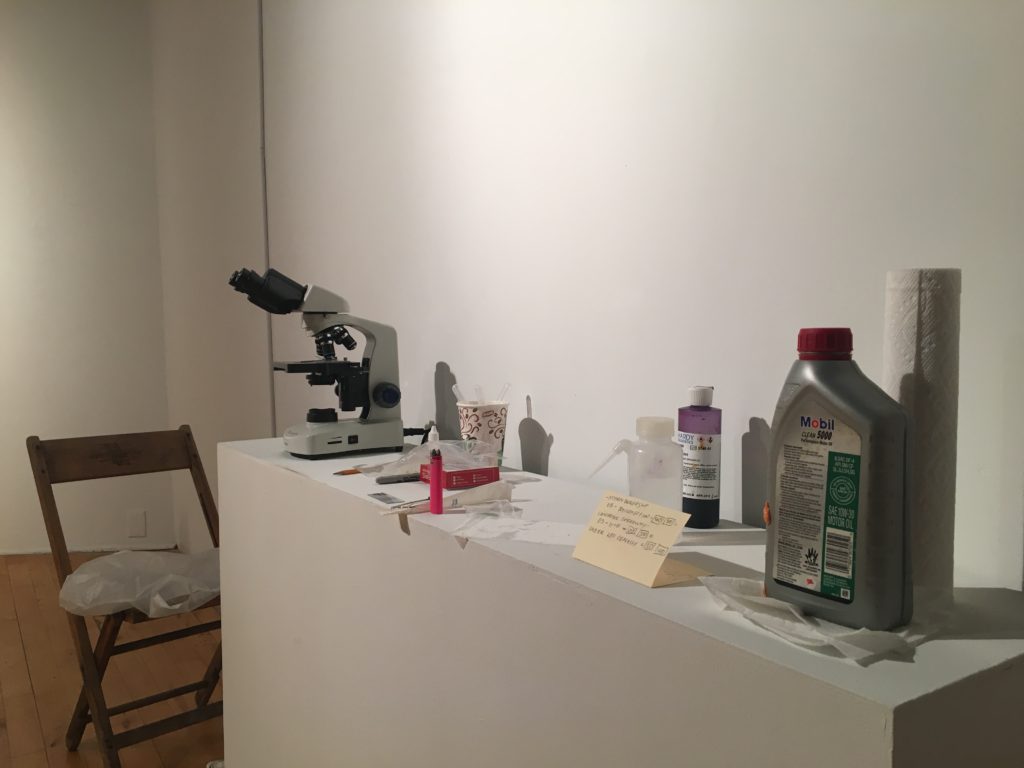
This project was made in collaboration with Chris Copeland and Solon Morse and was developed at Coalesce Center for Biological Arts. Metabolic Raceway was exhibited at Big Orbit Gallery in Buffalo NY.